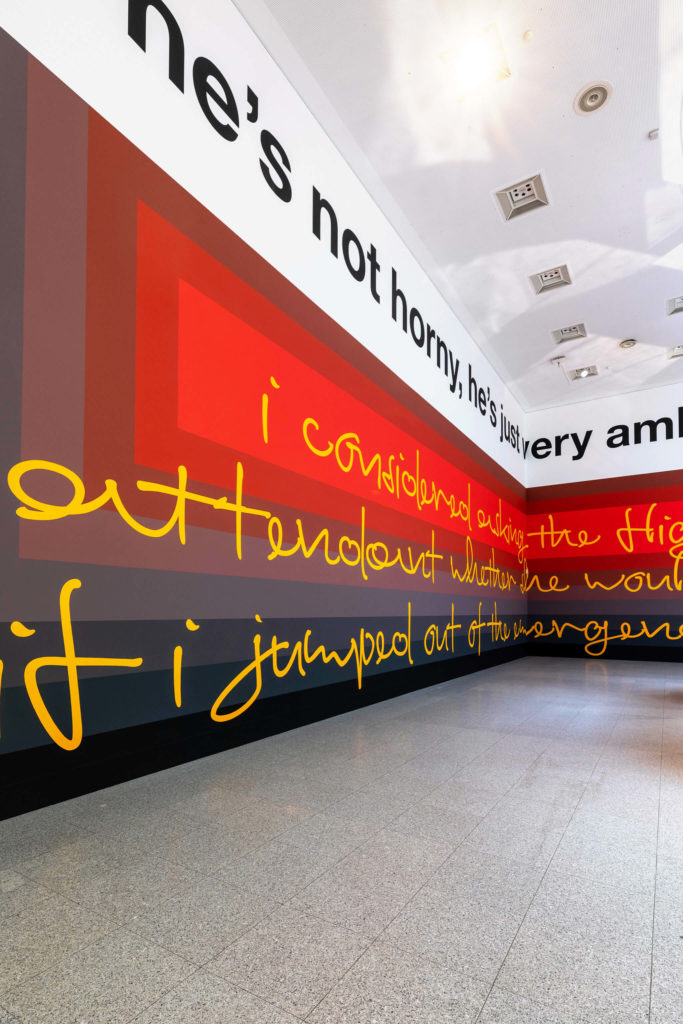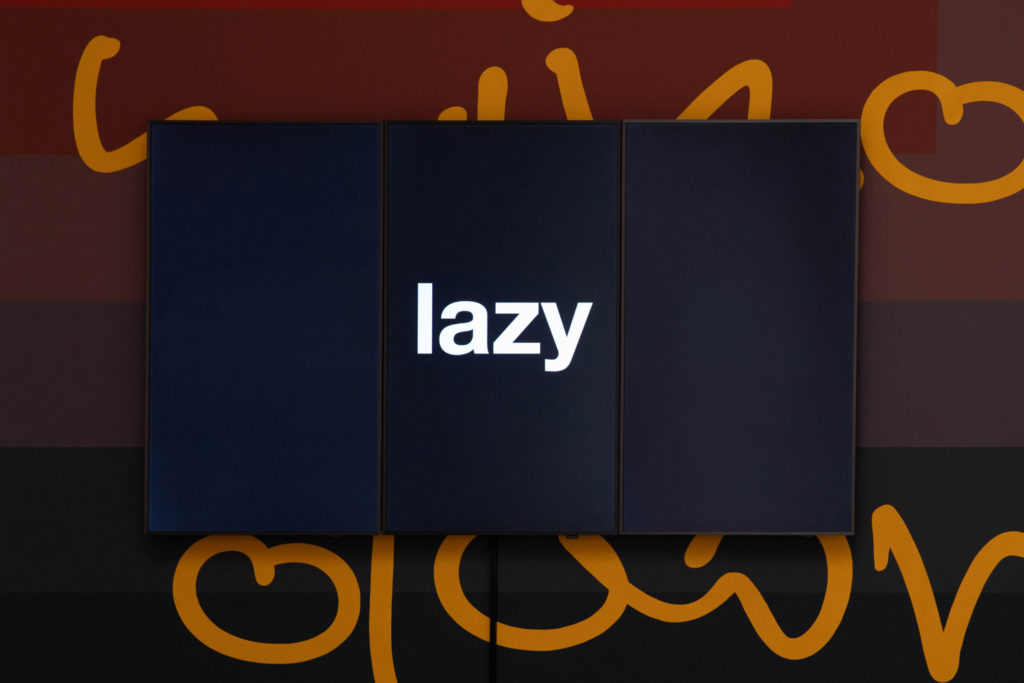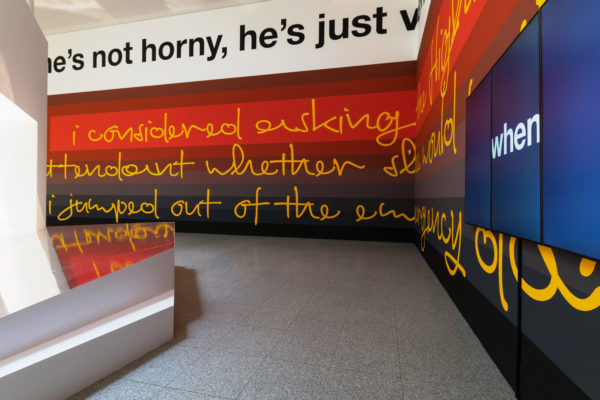Nora Turato
Thanks, I hate it!, 2020
Video
He’s not horny, He’s just very ambitious/
I considered asking the flight attendant whether she would
mind if I jumped out of the emergency door, 2020
Wall painting
Courtesy the artist,
Galerie Gregor Staiger
and LambdaLambaLambda
*1991 in Zagreb, Croatia
lives in Amsterdam
Language is the central theme of Nora Turato’s performances, videos and wall works. She writes and performs spoken-word poems, interweaving text fragments from advertising slogans and everyday communication, and reflecting the language and textual culture of the present day. How is language used today, and which signals do sound and speech communicate? What effect does the aesthetic of visually perceived texts have? Language is constantly changing. It expresses the social spirit of our times in an audible and visible form. Nora Turato’s artistic inventions focus on how language can be used to detect cultural development.
In the early20th-century avant-garde, texts and text fragments frequently appear in images and collages. Dada and surrealism saw themselves as both visual art and literary movements. A number of their protagonists worked with painting, collages, sculpture and poetry simultaneously. Design and typography became an important theme. Kurt Schwitters, one of the most important Dada artists, stated, “Typography can be art in some circumstances.” The element of visual design in poetry began to become significant around 1930 with the emergence of concrete poetry. Here language itself becomes the theme. Its phonetic and visual aspects are the central focus, while the content recedes into the background. In the 1960s, pop art and conceptual art linked language or writing with visual art. This takes many different forms: texts can be the sole design motif; they can make clear statements or solely serve the imagination.
Today the fields in which language and visual art meet have multiplied immensely. They have expanded so much that it is often scarcely possible to clearly categorise a work as belonging to a particular genre. In music and literature, spoken-word performances emerged as an important form thanks to movements such as the Beat Generation in the 1960s. In the visual arts, the Fluxus movement played an important role in bringing spoken-word performances to the fore in this field. The fusion of the arts can be experienced directly in Nora Turato’s works: her practice encompasses spoken-word performances, video and audio works, large-scale murals and graphic works as well as artist’s books. The scripts on which her works are based reflect on media as well as on the design of the form and the content of the language with which we are confronted every day. She condenses text fragments from advertising and social media, everyday platitudes, film and literature into rhythmic speech acts and visually striking images. Her interest lies in the effect that language has in a particular context, the political appropriation of words, and the interpretation of language and how it is determined by the environment.
Johanna Adam
Nora Turato studied at the Rijksakademie van Beeldende Kunsten
and the Gerrit Rietveld Academie in Amsterdam
as well as the Werkplaats Typografie in Arnhem.
Her practice encompasses spoken-word performances, video and audio works, large-scale murals and graphic works as well as artist’s books.



